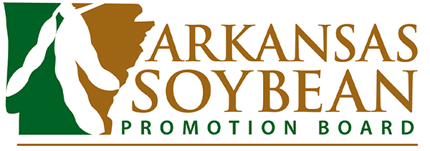Research
The Arkansas soybean industry contributes $2 billion annually to the state’s economy. Every soybean farmer pays into the commodity’s checkoff program. Those funds are administered by the Arkansas Soybean Promotion Board (ASPB), which invests in research, promotion and education.
Our firm’s work with the board includes conversations with many agriculture advocacy groups like the FFA and 4-H. Over the last few years, the leaders of these organizations have reported students becoming less interested in careers in agriculture. In turn, we began developing a strategy with the board that would address the issue.
We conducted primary research via interviews with agriculture educators and distributed an electronic survey with high school counselors in Arkansas. Ag educators revealed a steady decline in the number of students planning to pursue careers in agriculture, including students who belonged to pro-agriculture organizations like the FFA. The educators told our team that parents of these kids failed to see agriculture as a viable career option for their children. In fact, parents who held jobs in agriculture actually felt that an ag career was a step down for their children.
Survey results from high school counselors revealed that students were asking about ag careers less often. In fact, research showed guidance counselors rarely think to recommend agriculture careers unless they were asked. Furthermore, guidance counselors almost never suggest agriculture as a career to high school females. Our specialists also conducted secondary research for ideal video length to effectively communicate with the target audience and found the optimal length was less than six minutes. Each video was edited accordingly.
These results provided us with a solid foundation to build the Field to Film: Career Snapshots video series.
Planning
The video series focused on communicating career opportunities in the agricultural industry to Arkansas high school and college students. The goal of the Field to Film: Career Snapshots digital video series was to develop a communication tool highlighting young, successful professionals in agriculture careers ranging from the field to the laboratory. We planned to distribute the videos to high school counselors, higher education agriculture departments, ag student organizations and social media.
We planned and budgeted to produce six videos. The featured professionals included a precision agriculture consultant, commodity merchandiser, second-generation farmer, sustainability coordinator, agriculture banker and a link series specialist. The objective was to demonstrate the variety of opportunities and to promote consideration of agriculture careers. Our specialists used MyMajors.com to provide salary and other key information included in web copy published with each video, providing real-world implications on an ag career choice.
The goal of the Field to Film: Career Snapshots digital video series was to develop a communication tool highlighting young, successful professionals in agriculture careers ranging from the field to the laboratory.
Implementation
We developed a content outline for use during production to ensure consistency in the series and keep the board’s objective the focus of every interview. We guided each young professional through an interview focusing on the description of their daily duties, a summary of their education path and a compelling story about why they chose a career in agriculture. We began publishing the series in the fall to drive a greater impact for reaching the target audience. To better connect with the high school and college students, no professionals over the age of 30 were selected. We featured female professionals in half of the series in recognition of the lack of counseling to females for ag careers.
The Field to Film: Career Snapshots video series demonstrated to Arkansas students that working in the agriculture industry doesn’t just mean “going back to the farm,” but can be a career path that requires many different skills. Our specialists recruited and showcased young professionals in the series based on research that noted high school students related better to professionals close in age. A challenge we faced was parents discouraging their children from pursuing agriculture because blue-collar dress codes were interpreted as unsuccessful among them. We overcame this by featuring professionals who contribute to agriculture through a variety of work environments, including white-collar.
The distribution plan focused on ASPB’s YouTube channel because data showed that YouTube reaches more 18-to-49-year-olds than any cable network in the United States. We embedded each video on the board’s website under the Students section and archived the entire series there. We promoted the series through the board’s Facebook, Twitter and Instagram channels to drive views and website traffic, where we featured the series on the board’s homepage. Finally, we distributed the series as a YouTube playlist to FFA state administrators for easy sharing with students and faculty via their own digital channels. The budget for the entire series was $35,000, which included research, creative concepts, video production, editing, social media support and website development.
Evaluation
The career snapshot series is the most successful student communication tactic the board has implemented to date. We spent time with 1,400 high school students during a single event, many of whom told us they were now considering careers in agriculture after learning from the series how diverse the industry is. In total, the six videos produced in 2016 for Field to Film: Career Snapshots reached more than 40,000 Arkansans with a 112 percent increase in video views for the channel. One of the videos ranked as the third most visited page on the entire website in 2016. This project was a complete success; the series was approved to move forward in the next fiscal year.
We learned video is a great medium for educating digital natives about careers in agriculture. We also learned sharing the videos on social media allowed us to inadvertently reach the target audiences’ parents and educate them on diversity within agriculture.
Ultimately, the videos demonstrate there is a career path for everyone in agriculture.







